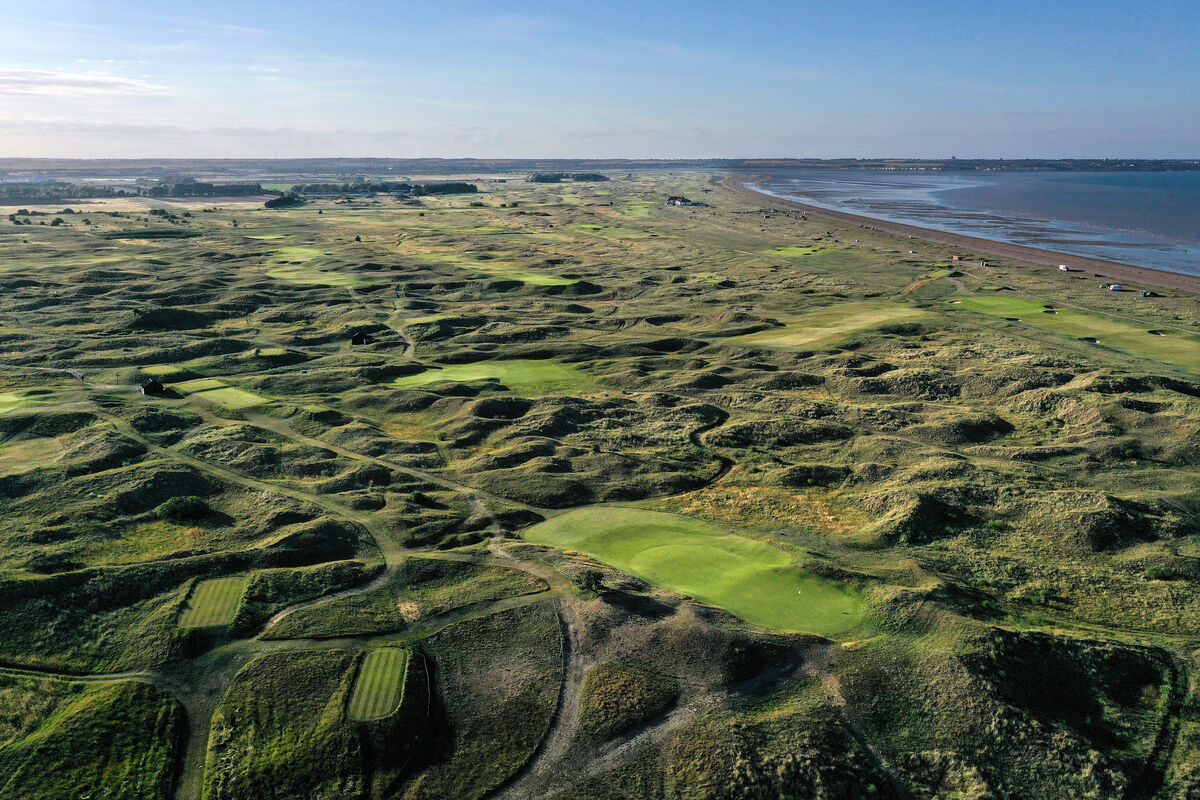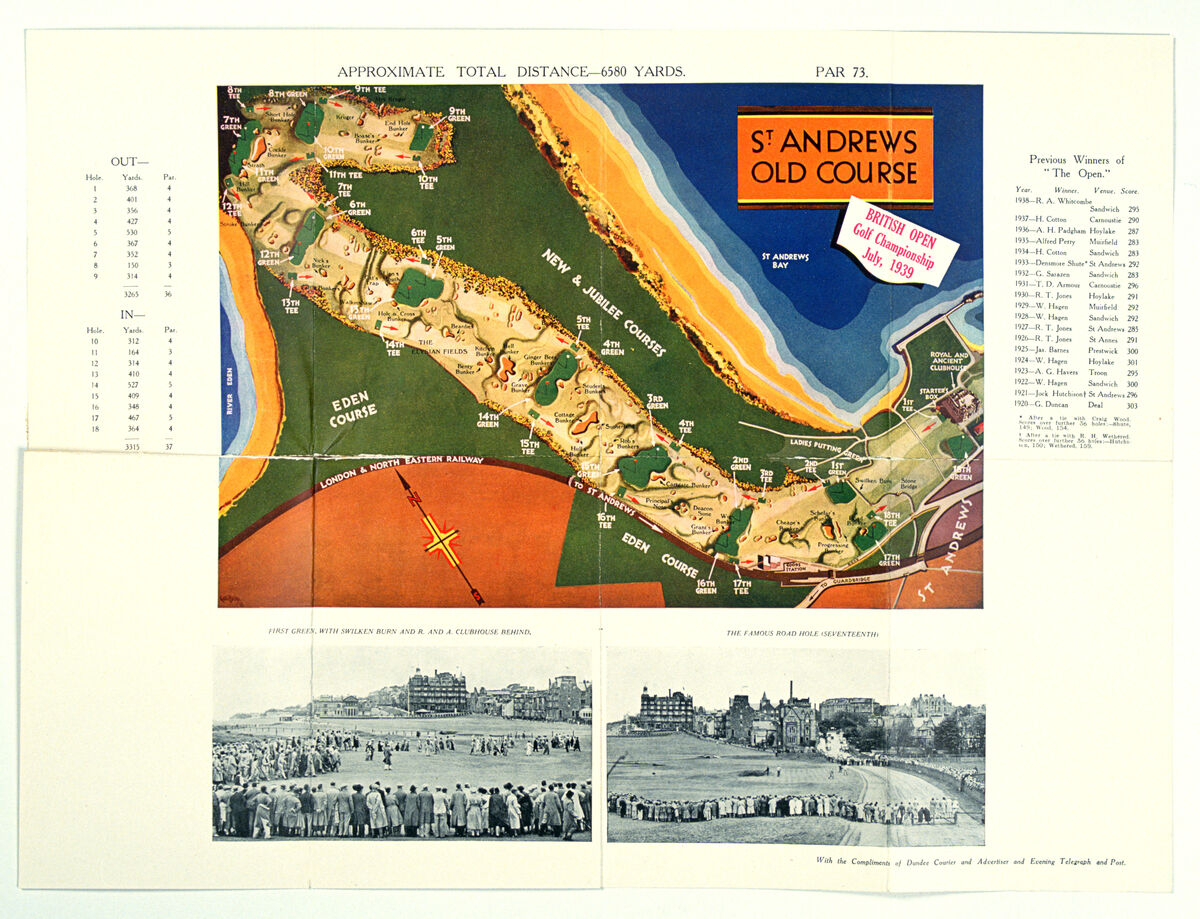The Definition of a Links Golf Course
A true links golf course must meet these specific criteria that change the way you play

In the ancestry of golf courses, the links golf course rests immovably at the top.
Links Golf Course Definition
A links golf course is a seaside course built on the sandy, undulating coastal ground that features few if any trees, fescue grass, no defense to coastal winds, and quick-draining sandy soil that produces firm conditions.
Other features typical of links golf courses include few if any water features; deep pot bunkers; and routing that goes out to the farthest point of the golf course, then back towards the clubhouse.

Check out the routing of perhaps the most famous links course in the world, the Old Course at St Andrews, from this overhead look ahead of the 1939 Open Championship. The first seven holes all play in the same direction, holes 8-10 horseshoe around the perimeter of the layout, and holes 12-18 beeline back to the clubhouse.
RELATED: How to Play St Andrews Old Course
Criteria of Links Golf Courses
Here’s how each element of a links golf course impacts the way you play.
|
Criteria |
Impact |
|
Seaside |
Sandy soil, constant wind |
|
Sandy soil |
Firm turf, fast conditions, lots of roll |
|
Few to no trees |
No defense from ocean wind |
|
Deep bunkers |
Forces strategy and accuracy |
|
Undulating ground |
Allows accurate players to take advantage of roll while punishing errors |
|
Out-and-Back routing |
Minimal changes in wind direction (relative to golfer) during rounds |
Modern Links Golf
Because of the seaside requirement, most new golf courses aren’t links courses. Parkland courses, which are inland, and incorporate trees and more water hazards into the layout, are typically the default style of modern course build, as that’s what most available land accommodates.

Bandon Dunes (Oregon) is a rare modern-built true links golf course
However, links golf courses still pop up occasionally. Most famously, Scottish golf course architect David McLay Kidd built Bandon Dunes on the Oregon coast in the 1990s, one of the rare modern American links golf courses. Today, Bandon Dunes includes six links courses and is among the most popular golf destinations in the world.
RELATED: David McLay Kidd & The Courses That Exude His Philosophy
Links-Style Golf Courses
Links golf courses are often imitated, and arguably, sometimes duplicated.
Take Whistling Straits for example. Of course, Kohler, Wisconsin, doesn’t border any ocean, but it’s arguably situated along the sea, nestled up against Lake Michigan. Other than its geography, the 1998 Pete Dye design resembles a links course, making it the poster child for the links-style genre of golf courses. These courses, which meet several links course criteria with a compromise or two, still give golfers a taste of links golf, much closer to the way the game was invented than the typical parkland course.
RELATED: Pete Dye's Golf Courses and Daring Design Traits
In addition to Whistling Straits, popular American links-style courses include Chambers Bay (WA), Arcadia Bluffs (MI), and Ferry Point (NY).
History of Links Golf
Way back in the 1400s, Scottish farmers found no use for the sandy ground next to the ocean. While the soil was unusable for crops, it was ideal for golf. The term links describes the rising ground found along the coast, which is where links golf courses were built.
Because early golf course architects didn’t have the luxury of earth-movers, links golf courses were built on top of the land in its natural state. The architect’s job was to select teeing areas, green sites, and shape fairways by removing vegetation.

Royal Portrush in Portrush, Northern Ireland is a textbook links golf course
The Meaning of Links
It’s common to hear people refer to ”the links” in reference to any golf course, but before you throw around that expression, you should understand that it’s technically not correct unless you’re referring to a true links course.
While most people either understand the casual reference, or don’t know the distinction, it’s only a matter of time before you get corrected by a savvy golfer educated in the game’s architecture.
Of course, now that you’re educated on links golf, you can enlighten your golf buddies the next time they mistakenly toss out the expression.